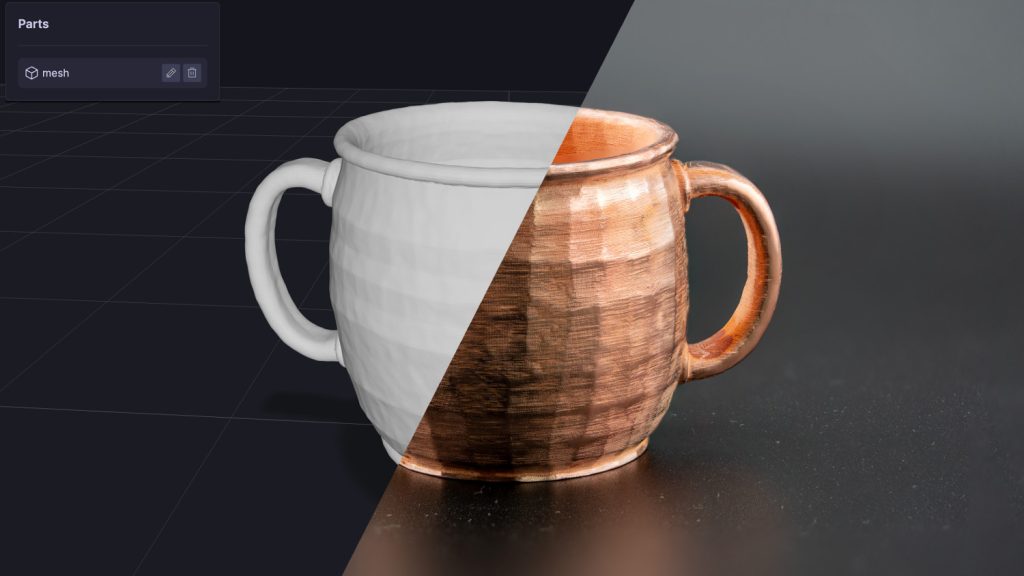To change the world, we need to massively expand the number of people who are able to design new products and bring their ideas to reality. AI-powered 3D tools hold the key to driving that expansion, writes Backflip CEO Greg Mark
Today, the number of people who have ideas that could transform the world dwarfs the number of people who have the practical skills and ability to turn those ideas into reality.
In all of the narratives we’ve seen over the past decade about the need for reskilling or upskilling professionals amid technological upheaval, we have never had a discussion about the power and potential of helping more people achieve the ability to create 3D models and adding easier on-ramps to CAD, which I believe to be one of the most transformative technologies of the last several decades.
I’ve spent 20 years in manufacturing and design. I’ve been to automotive supplier plants where you’ve got five overworked engineers working in CAD, supporting 800 incredibly mechanically talented manufacturing employees who are operating and maintaining production lines.
The latter group always finds creative and resourceful ways to support and improve operations, but they just don’t do 3D design. You’ll talk to them, and they have a torrent of pent-up ideas for how to make specific areas of a manufacturing line faster, with reduced scrap rates and better processes.
But those ideas don’t become reality, in large part because these workers can’t easily create a 3D model to plug into the infrastructure of modern manufacturing, like CNC machining and 3D printing.
But imagine if those 800 automotive workers were each empowered to more easily learn to design the fixtures, tools, or other process aids that they know would make their job easier.
We’d make better cars, faster, and at lower cost. And then plant engineers – who are spread thin working on many projects at once – could better focus, and more responsively support other areas of the plant and more technically complex initiatives.
Other industries have broken down barriers to innovation and unlocked human imagination. We don’t need to change our 3D modelling programmes, but we do need to help people adopt them faster and get started more easily
Fundamental shift
I see a fundamental shift coming in the ways that people are introduced to 3D design that unlocks a future that’s always lived in our imagination.
Other industries have broken down barriers for innovation and unlocked human imagination through education, tools and training. And the last five years has laid the foundation for us to build AI-powered tools that simply couldn’t exist before.
We don’t need to change our current 3D modelling programs, but we can help people adopt them faster and get started more easily.
At Backflip AI we’re building AI tools for the physical world, and my hope is that we can be a key part of this sea change.
With our first product, we’re already seeing people who have never touched traditional 3D design tools take an idea in the form of a photo, a sketch, or a text description, and turn it into a 3D mesh that can be 3D-printed into existence.
It’s not perfect, but we’ve heard from many users that have, for the first time in their lives, been able to get started creating what they previously could only imagine.
This is a stepping stone, and a way to help more people get familiar with 3D design before making the transition into existing, deeply featured CAD tools easier. In that way, we hope more people can help build the technologies that make our collective lives better.
Backflip – Accessible 3D design
In a prior life, I focused on transforming the downstream side of manufacturing, or how you get from an existing 3D model to a physical part faster and easier, by developing advanced carbon fibre and metal 3D printing technologies.
At Backflip, we’re now focused on the front end: making 3D design more accessible.
My team, which comprises some really smart software and mechanical engineers, has an intimate knowledge of how physical things are designed and manufactured, and the techniques for how to train cuttingedge AI models.
We’ve created state-of-the-art AI models based on our proprietary data, the world’s biggest synthetic data set of 3D models. Our models are constantly improving, following the exponential technology growth curves pioneered by AI companies like Midjourney and OpenAI. And we will keep getting better as we continue to refine our technology and grow our data set.
I believe we are on the threshold of a massive transformation in human innovation which stands to benefit all of us. What is important is the imagination in our heads, and technology, training and education can help lead the way into this next frontier.
About the author:
Greg Mark is an American inventor, engineer and entrepreneur and the founder and CEO of Backflip AI, which has built a foundational model for 3D generative AI that turns ideas into reality.
Prior to Backflip, Mark invented the process for carbon fibre 3D printing and founded 3D printing company Markforged. www.backflip.ai
This article first appeared in DEVELOP3D Magazine
DEVELOP3D is a publication dedicated to product design + development, from concept to manufacture and the technologies behind it all.
To receive the physical publication or digital issue free, as well as exclusive news and offers, subscribe to DEVELOP3D Magazine here






